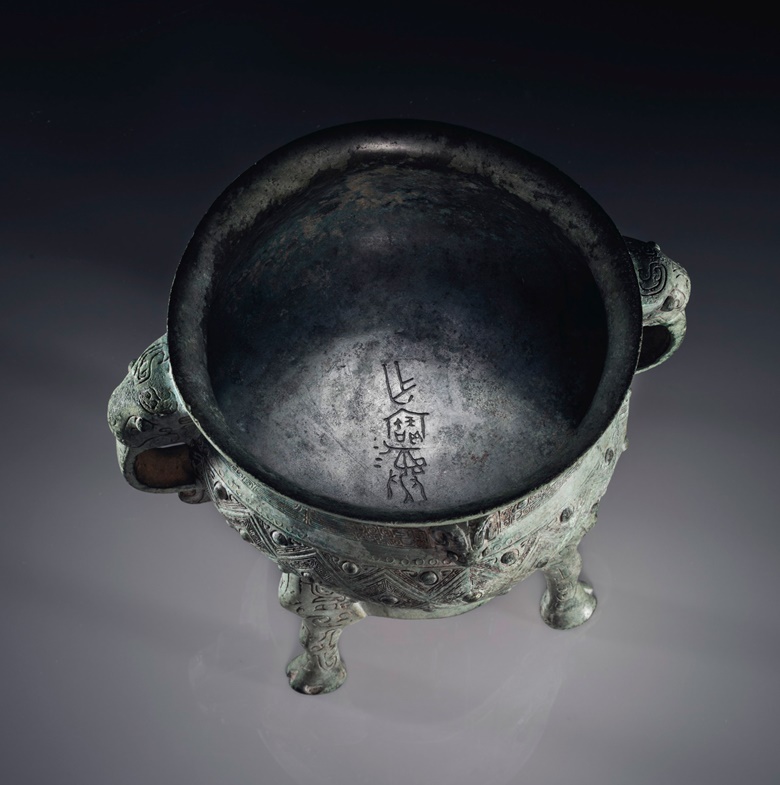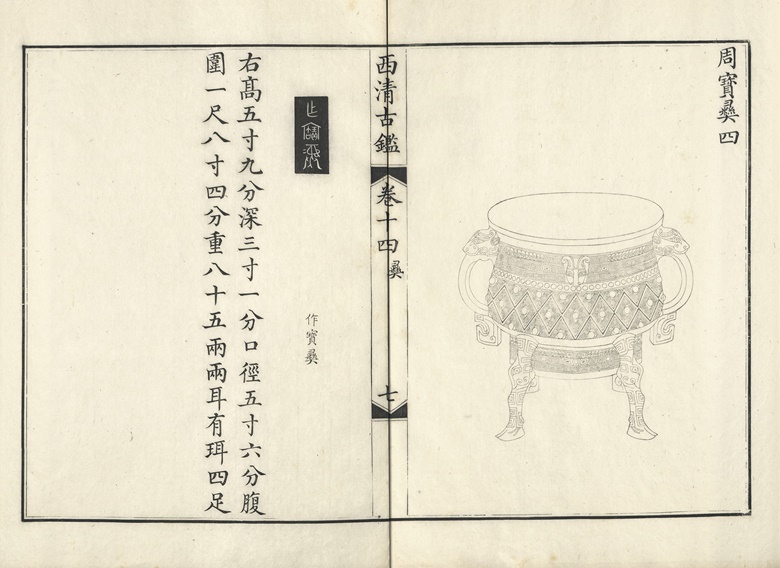5 minutes with... A 3,000-year-old bronze gui
This bronze vessel — designed for offering grain to the spirits of Chinese ancestors — is one of only 15 four-legged examples known to our specialist, Ling’ao Tong. Once owned by the emperor Qianlong, it is offered in New York on 13 September
According to ancient Chinese folklore, ancestral ghosts not only inhabited the land of the living, but controlled it. People would go to great lengths to bury their relatives with everything they could possibly need in the afterlife, including food, wine, jade and tools. In daily life, too, regular offerings would be made in ancestral temples to keep the family spirits nourished and happy.
‘This bronze vessel would have been used 3,000 years ago in just such a ritual,’ explains Ling’ao Tong, specialist in Chinese works of art at Christie’s in New York. ‘Its wide-mouthed form, known as a gui [pronounced gway ], was designed for offering grain. It would have been part of a suite of bronze vessels used for dedicating food, water and alcohol.’
The Zuo Bao Yi Gui, a highly important and extremely rare bronze ritual four-legged food vessel, Early western Zhou dynasty, 11th-10th century BC. 7⅜ in (18.8 cm) high, 7⅛ in (18.1 cm) mouth diam, box. Estimate: $4,000,000-6,000,000. Offered in Qianlong’s Precious Vessel: The Zuo Bao Yi Gui on 13 September 2018 at Christie’s in New York
This particular vessel dates from the early years of the Western Zhou dynasty, which succeeded some five and half centuries of the Shang dynasty in around 1046 BC. The conquering Zhou inherited the Shang’s religion and rituals, as well as its material culture.
‘The vessel was cast from several clay moulds,’ explains Tong. ‘This bronze-making technique, mastered by the Shang and passed to the Zhou, was unique among ancient civilisations.’
‘Where Chinese art is concerned, Qianlong provenance is the best you can get, but the majority of his ancient bronzes still remain in the Forbidden City in Beijing’ — Ling’ao Tong
The vessel’s ornamentation, featuring zoomorphic rams’ heads and lozenge-shaped geometric scrollwork, was also inherited by the Zhou from the Shang, although the motifs’ significance has been lost over time. For the specialist, however, it’s the vessel’s four-legged design that stands out. ‘I only know of 15 such four-legged examples, the majority of which are housed in museums,’ he says.
This bronze gui also features a rare inscription on the inside. It reads, ‘made this precious honourable vessel’, suggesting to Tong that the piece would have been commissioned by ‘someone of immense wealth and status’. Since writing on bamboo and wood from this era has not survived to the present day, the inscriptions on ancient bronzes are also notable for being among the earliest written records of Chinese history.
A rare inscription — among the earliest surviving written records of Chinese history — can be seen on the inside of the vessel
Many centuries on from its early existence, the quality of this gui caught the discerning eye of the Chinese emperor Qianlong, who reigned from 1736 to 1795. Arguably the greatest collector of Chinese art, Qianlong commissioned a catalogue of his vast trove, which was printed in 1755 at the imperial workshops in Beijing. This bronze is listed in volume 14 of the bronze catalogue Xiqing gujian.
The Zuo Bao Yi Gui as it appears in the Xiqing gujian, the catalogue of the Emperor Qianlong’s bronze treasures that was printed in 1755
‘Where Chinese art is concerned, Qianlong provenance is the best you can get, but the majority of his ancient bronzes still remain in the Forbidden City in Beijing,’ Tong explains. ‘I’ve only ever found six in private hands that came through his imperial collection.’
From Qianlong’s palace, this gui passed into the hands of many of the 19th and 20th centuries’ most famous collectors and dealers of Chinese art, including Wu Dacheng, C.T. Loo, Edward T. Chow and Bella and P.P. Chiu. On 13 September, it will be offered in a dedicated one-lot sale at Christie’s in New York, as a highlight of Asian Art Week.
.jpg)


.jpg?mode=max&h=340)

No comments:
Post a Comment